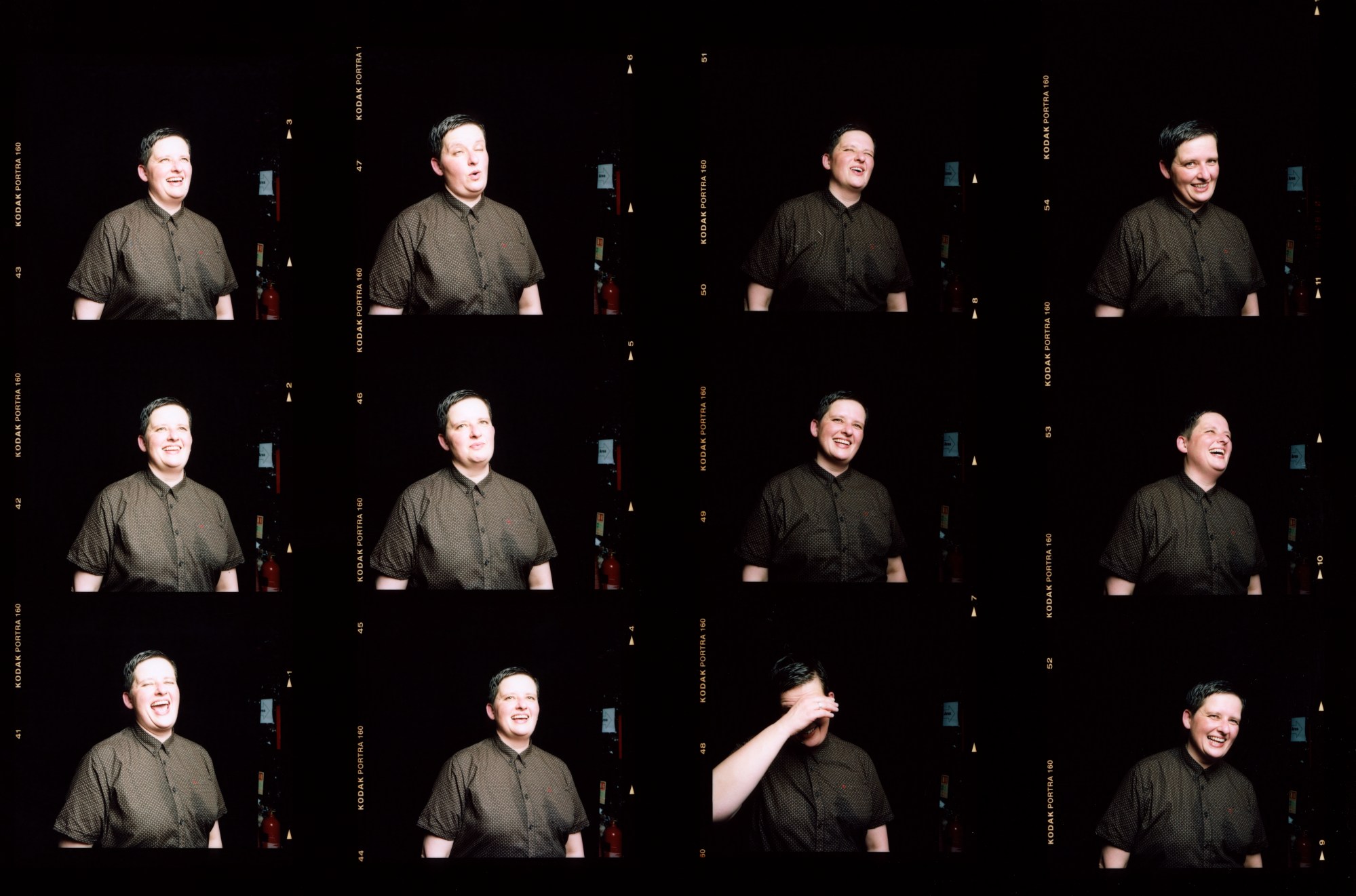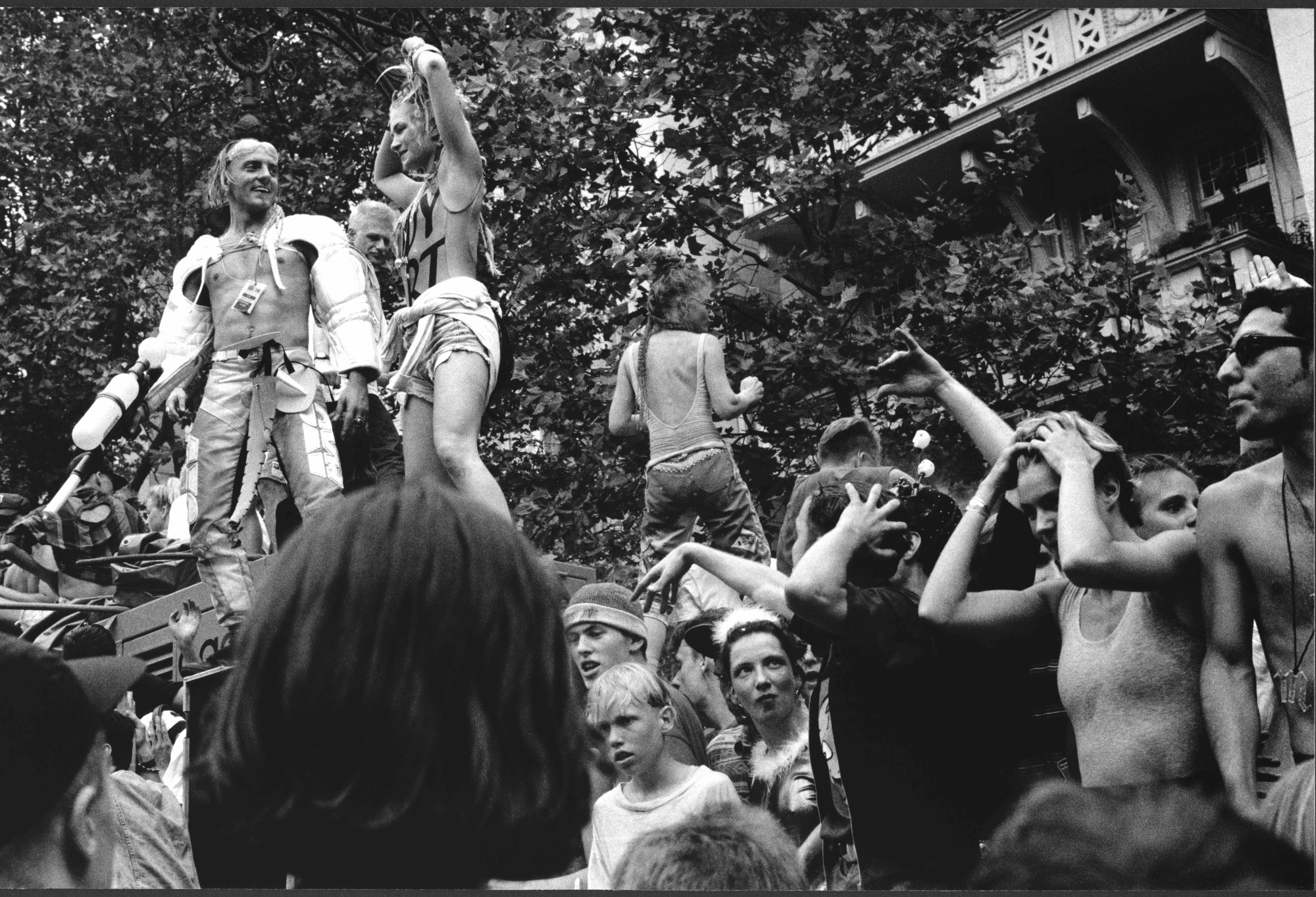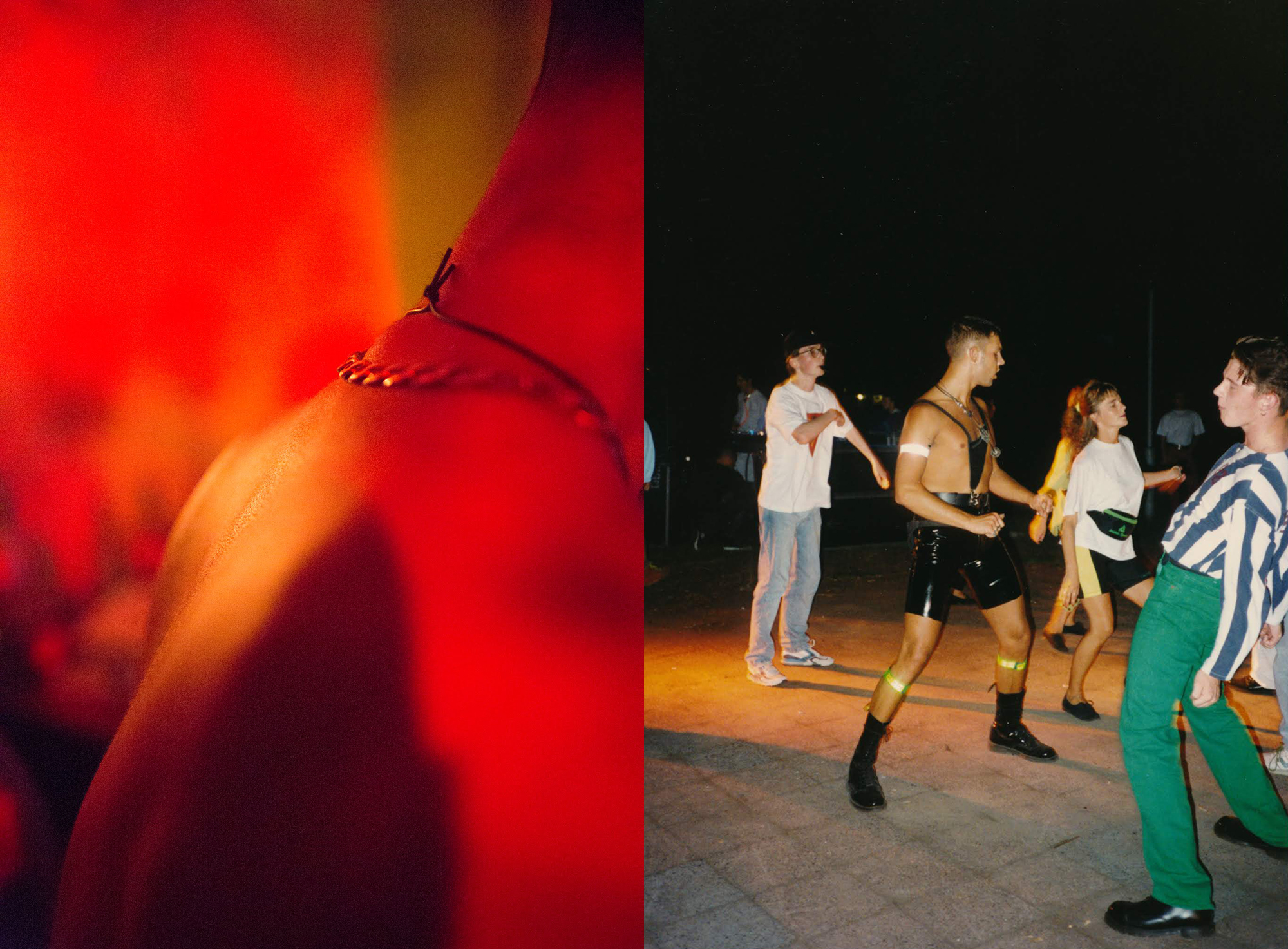This article originally appeared on i-D Germany.
“That night, I became certain that this was the future,” says Heiko Hoffmann of his first Tekknozid party, a typical rave night that took place in East Berlin in the beginning of the 90s. The former editor-in-chief of Groove still remembers this night vividly. It was excessive, free and limitless: “There was this powerful feeling in the air that a new community was about to take form.”
No Photos on the Dance Floor! Berlin 1989–Today is a new photography exhibition exploring that time. It has been co-curated by Hofmman and its title refers to Berlin clubs’s famously strict policy of not allowing photos to be taken inside the premises. “The club scene in Berlin couldn’t have developed the way it has without its no-photo policy. Which, by the way, existed long before smartphones did,” Hoffmann says. “But especially in the time of ‘pics or it didn’t happen!’ it’s important to have spaces where you can enjoy the moment without thinking about how to capture it and share it with the outside world.”

Following the fall of the Berlin Wall in 1989, Berlin’s clubs became the meeting point for a new emancipated generation. And still, to this day all over the world are seen as safe spaces for marginalised groups. “The rise of Berlin as an international techno metropolis and the possibility of low-budget flights within Europe fundamentally changed the club scene,” Hoffmann says.
But what lies behind our fascination with Berlin club culture? Behind the notion that thousands of people travel daily to the rave capital of the worlds to feel part of this phenomenon? For Hoffmann it’s the sense of community, even though it’s just a temporary one. “It’s the promise of a night that might lead you somewhere you never could’ve dreamed of. The promise of an environment where everyone is open-minded and curious and ready to lose themselves. That special feeling of being in the best place possible.”


It’s the exact feeling the works of the exhibition are working to reflect. “I’ve worked in the Berlin club scene for over 20 years,” says Sven Marquardt who contributes with his iconic black and white photography of his bouncer colleagues and Berghain residents like Marcel Dettmann. “A sense of life that can’t be separated from my work as a photographer — inspiration and zeitgeist means autonomous of social norms and conventions. My imagery is created far from Instagram likes and so close to club culture.”


The Italian photographer Salvatore Di Gregorio who has had huge names like Nina Kraviz and Tama Sumo in front of his lense sums it up thus: “The dance floor is able to generate this unique and mystical experience. The aesthetic and the emotions of the people who are part of this ‘ritual’ are very powerful and as a photographer, I am attracted to that.”
German photographer Ben de Biel, meanwhile, can’t resist the the unconstrained people on the dance floor: “They are who they are and don’t try to hide it just because a camera is pointed at them,” he says.

“In the last 30 years a club scene with a strong sense of individual identity emerged in Berlin,” concludes Hoffmann. “Especially in comparison to New York or London, it’s striking how many free spaces and places to experiment Berlin still has to offer.”
Maybe the fascination lies within the fact that you can only know what everyone is talking about when you experience it yourself. When the dance floor spits you out in the early hours and all the memories are saved in your head instead of your camera roll.
Be part of the opening of No Photos on the Dance Floor at C/O Berlin when the exhibition rooms turn into a dance floor. You can find more information here .
